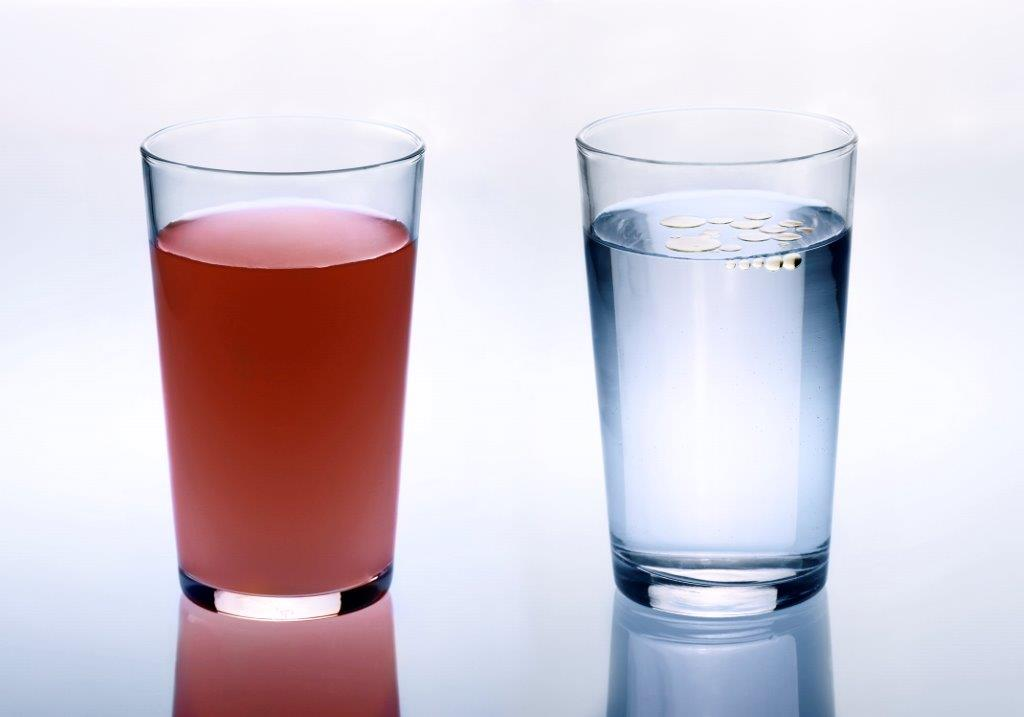| Ingredients Beyond Fish Oil!
Tri-KRILL™ contains an extract of Krill sourced directly from the Antarctic. Tri-KRILL™ is sourced directly from the Antarctic, and combines the power of krill phospholipids with 12mg of astaxanthin per two capsules in an easy-to-take Liqui-Krill™ capsule. The highest of any krill supplement.
Tri-KRILL™ with maximum krill oil benefits
Krill oil contains omega-3 fatty acids, and contains an antioxidant called astaxanthin. Krill oil also has Choline which is found in krill phospholipids as part of the Phosphatidyl choline molecule. Choline is not found in fish triglycerides. Choline has critical functions as a precursor to the neurotransmitter acetylcholine.
Omega-3 fatty acids have been found beneficial in so many conditions. Heart disease, arthritis, cognitive decline, depression, anxiety, skin conditions, and many other disorders have been shown to be associated with omega- 3 fatty acids. This is not unexpected when we realize that omega-3 fatty acids are structural molecules in almost all tissues.
EPA is highly unsaturated fat they contain 6 and 5 double bonds on their long structural chain. These polyunsaturated fats play a very important role with the function of our bodies. EPA is a vital nutrient and may be taken to maintain healthy function of the brain and eyes. We use Superba™ Krill: Superba™ Krill is extracted exclusively from Euphausia superba, an Antarctic krill species rich in the long chain omega-3 fatty acids EPA (eicosapentaenoic acid) and DHA (docosahexaenoic acid). Superba™ Krill omega-3s are better recognized by the body because they are attached to phospholipids, allowing better assimilation into the cells. How does superba™ krill compare to other marine sources from a purity standpoint? Antarctic krill live in some of the world’s cleanest waters. Thus, the potential for absorption and storage of environmental toxins is minimal. Superba™ Krill is neither a manufactured concentrate nor a product in which the molecular structure of the oil or its constituents have been altered. What is unique about the way krill is harvested by Aker biomarine used in Tri-Krill™?
What Is Astaxanthin? Krill oil contains high levels of one of the most powerful natural antioxidants called Astaxanthin. Astaxanthin is a carotenoid molecule from the same family as beta-carotene, lycopene, and zeaxanthin, though astaxanthin appears to be more active in quenching superoxide, hydroxyl, and other radical species. Recent studies suggest that astaxanthin has anti-inflammatory action, inhibiting cytokine cascades in a number of trials of cardiovascular health, respiratory health, joint health, athletic performance, and others. Astaxanthin Research Astaxanthin has extraordinary antioxidant properties, which has been demonstrated in numerous studies conducted throughout the past decade. Astaxanthin, like other carotenoids, sacrifice themselves in order to protect body cells. Carotenoids absorb the excited energy of singlet oxygen – a highly reactive form of oxygen that if left unchecked can directly damage fats, proteins, and DNA in the body. By sacrificing itself, astaxanthin prevents surrounding cells from being damaged.
The Most Studied Natural Astaxanthin. AstaREAL® has sponsored a large number of efficacy studies including over 40 clinical studies conducted all over the world. The Safest Natural Astaxanthin AstaREAL® sponsored over 40 safety reports including a large number of clinical studies. Natural astaxanthin or synthetic? Synthetic astaxanthin is not made for human consumption. It is synthesized from petrochemicals and sold into animal-feed markets. Farm-raised salmon, for instance, generally are fed the far-less-expensive synthetic astaxanthin to color their flesh a more attractive reddish hue – otherwise they would be a pale gray, not attractive to consumers..
Natural astaxanthin, on the other hand, gives wild salmon their color. Synthetic astaxanthin is manufactured in a laboratory from petrochemicals or petrochemical derivatives. Synthetic astaxanthin is used as a feed supplement for salmon, crabs, shrimp, chickens and egg production. AstaREAL® supported by research but also produced in state-of-the-art facilities with the highest standards of product purity.
Esterified astaxanthin has been shown to have greater stability and greater biological function than the non-esterified forms found in synthetic and Phaffia-derived astaxanthin, which is called “free” astaxanthin That means it is REAL not Synthetic. Tri-KRILL™ has an extract of Krill sourced directly from the Antarctic; with our blend which combines the power of Krill Phospholipids with 6mg of astaxanthin per s capsule. Side Effects: Any person or pet with allergies to seafood shouldn’t use krill oil. |
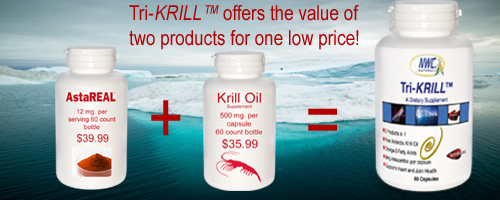 3X Formula with:
3X Formula with: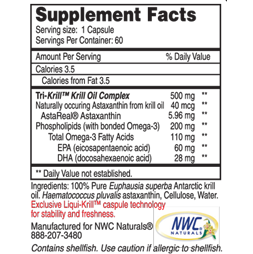
 Aker BioMarine uses a unique, patent pending technology that continuously siphons netted krill to the factory trawler. The krill arrive aboard alive; so that decomposition of its bioactive components does not occur before processing begins. Aker’s Eco-Harvesting® technology is also of fundamental importance because it successfully prevents by-catches of birds, marine mammals and fish.
Aker BioMarine uses a unique, patent pending technology that continuously siphons netted krill to the factory trawler. The krill arrive aboard alive; so that decomposition of its bioactive components does not occur before processing begins. Aker’s Eco-Harvesting® technology is also of fundamental importance because it successfully prevents by-catches of birds, marine mammals and fish.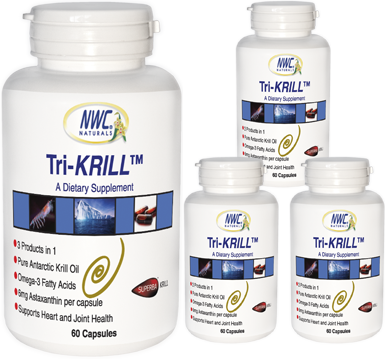
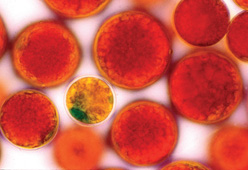 When you are eating farm-raised salmon, you are also ingesting synthetic astaxanthin, even though it is not currently registered as a human food or supplement ingredient in any country.
When you are eating farm-raised salmon, you are also ingesting synthetic astaxanthin, even though it is not currently registered as a human food or supplement ingredient in any country.